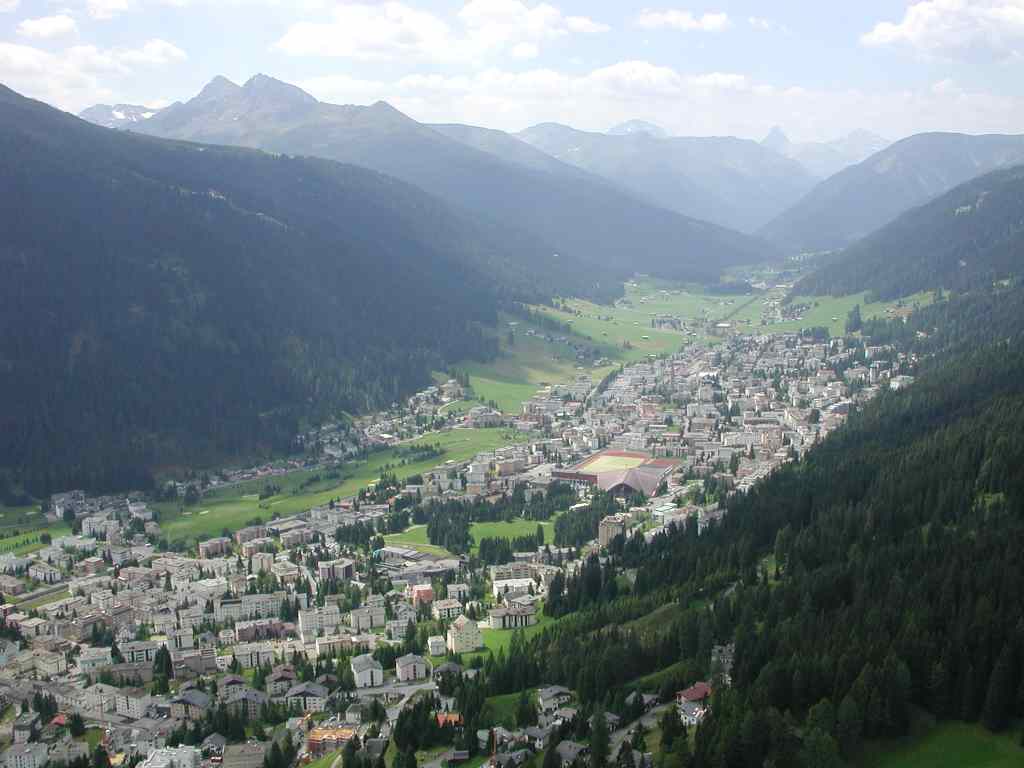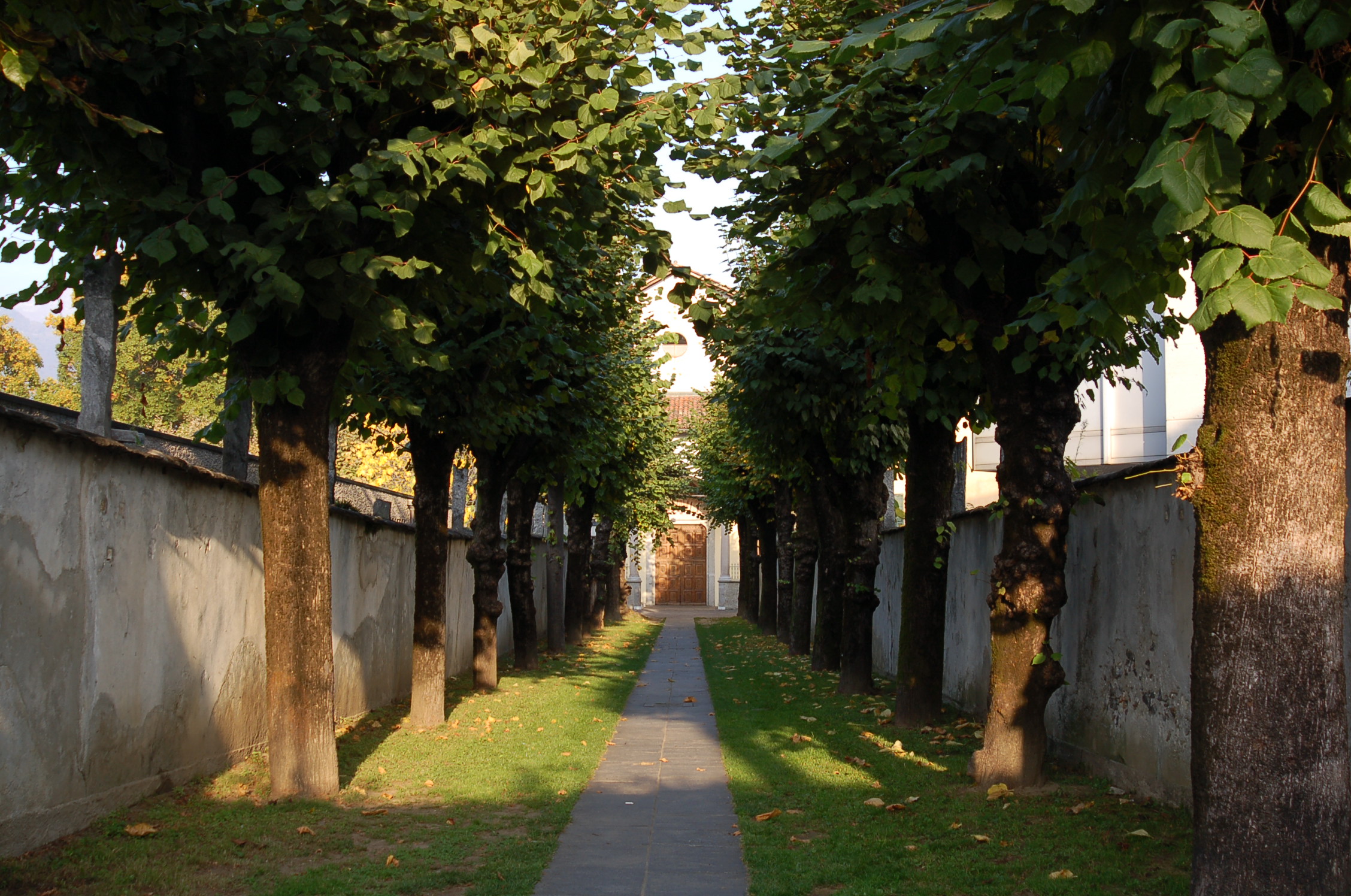|
Sophie Tauber
Sophie Henriette Gertrud Taeuber-Arp (; 19 January 1889 – 13 January 1943) was a Swiss artist, painter, sculptor, textile designer, furniture and interior designer, architect, and dancer. Born in 1889 in Davos and raised in Trogen, Switzerland, she attended a trade school in St. Gallen and, later, art schools in Germany, before moving back to Switzerland during the First World War. At an exhibition in 1915, she met for the first time the German-French artist Jean Arp, whom she married shortly after. It was during these years that they became associated with the Dada movement, which emerged in 1916, and Taeuber-Arp's most famous works – ''Dada Head'' (''Tête Dada''; 1920) – date from these years. They moved to France in 1926, where they stayed until the invasion of France during the Second World War, at the event of which they went back to Switzerland. In 1943, she died in an accident with a leaking gas stove. Despite being overlooked since her death, she is considered on ... [...More Info...] [...Related Items...] OR: [Wikipedia] [Google] [Baidu] |
Davos
Davos (, ; or ; ; Old ) is an Alpine resort town and municipality in the Prättigau/Davos Region in the canton of Graubünden, Switzerland. It has a permanent population of (). Davos is located on the river Landwasser, in the Rhaetian Alps, between the Plessur and Albula Ranges. The municipality covers nearly the entire valley of the Landwasser, and the centre of population, economic activity and administration is two adjacent villages, ''Davos Dorf'' (engl.: Davos Village) and ''Davos Platz'' (Davos Place), which are above sea level. Gaining prominence in the 19th century as a mountain health resort, Davos is perhaps best known today for hosting the World Economic Forum, an annual meeting of global political and corporate leaders. With its long history of winter sports, Davos also has one of Switzerland's largest ski resorts and hosts the international Spengler Cup, an ice hockey tournament, every December. Name ''Tavau'', the Romansh name, derives from the La ... [...More Info...] [...Related Items...] OR: [Wikipedia] [Google] [Baidu] |
Appenzell Ausserrhoden
Canton of Appenzell Ausserrhoden ( ; ; ; ), in English sometimes Appenzell Outer Rhodes, is one of the Canton of Switzerland, 26 cantons forming the Switzerland, Swiss Confederation. It is composed of twenty municipalities. The seat of the government and parliament is Herisau, and the seat of judicial authorities are in Trogen, Switzerland, Trogen. It is traditionally considered a "half-canton", the other half being Appenzell Innerrhoden. Appenzell Ausserrhoden is located in the north east of Switzerland. Together with the canton of Appenzell Innerrhoden, it forms an enclave within the canton of St. Gallen. The canton is essentially located in the Alpine foothills of the Alpstein massif, culminating at the Säntis. Appenzell Ausserrhoden was part of the historical canton of Appenzell, which was divided into Appenzell Innerrhoden (Catholic) and Appenzell Ausserrhoden (Protestant) in 1597 as a result of the Swiss Reformation. History Settlement in Appenzell started in the 7th an ... [...More Info...] [...Related Items...] OR: [Wikipedia] [Google] [Baidu] |
First World War
World War I or the First World War (28 July 1914 – 11 November 1918), also known as the Great War, was a World war, global conflict between two coalitions: the Allies of World War I, Allies (or Entente) and the Central Powers. Fighting took place mainly in European theatre of World War I, Europe and the Middle Eastern theatre of World War I, Middle East, as well as in parts of African theatre of World War I, Africa and the Asian and Pacific theatre of World War I, Asia-Pacific, and in Europe was characterised by trench warfare; the widespread use of Artillery of World War I, artillery, machine guns, and Chemical weapons in World War I, chemical weapons (gas); and the introductions of Tanks in World War I, tanks and Aviation in World War I, aircraft. World War I was one of the List of wars by death toll, deadliest conflicts in history, resulting in an estimated World War I casualties, 10 million military dead and more than 20 million wounded, plus some 10 million civilian de ... [...More Info...] [...Related Items...] OR: [Wikipedia] [Google] [Baidu] |
CHF50 8 Front Vertical
Murillo/Hane Field Aerodrome is located north northwest of Murillo, Ontario, Canada Canada is a country in North America. Its Provinces and territories of Canada, ten provinces and three territories extend from the Atlantic Ocean to the Pacific Ocean and northward into the Arctic Ocean, making it the world's List of coun .... References External links Registered aerodromes in Ontario Transport in Thunder Bay District {{Ontario-airport-stub ... [...More Info...] [...Related Items...] OR: [Wikipedia] [Google] [Baidu] |
Sophie Taeuber-Arp - Kompozycja
Sophie is a feminine given name, another version of Sophia, from the Greek word for "wisdom". People with the name Born in the Middle Ages * Sophie, Countess of Bar (c. 1004 or 1018–1093), sovereign Countess of Bar and lady of Mousson * Sophie of Thuringia, Duchess of Brabant (1224–1275), second wife and only Duchess consort of Henry II, Duke of Brabant and Lothier Born in 1600s and 1700s * Sophie of Anhalt-Zerbst (1729–1796), later Empress Catherine II of Russia * Sophie Amalie of Brunswick-Lüneburg (1628–1685), Queen consort of Denmark-Norway * Sophie Blanchard (1778–1819), French balloonist * Sophie Dorothea of Württemberg (1759–1828), second wife of Tsar Paul I of Russia * Sophie Dawes, Baronne de Feuchères ( 1795–1840), English baroness * Sophie Germain (1776–1831), French mathematician * Sophie Piper (1757–1816), Swedish countess * Sophie Schröder (1781–1868), German actress * Sophie von La Roche (1730–1807), German author * Princess Soph ... [...More Info...] [...Related Items...] OR: [Wikipedia] [Google] [Baidu] |
Sophie Taeuber-Arp Oval Composition With Abstract Motifs 1922
Sophie is a feminine given name, another version of Sophia, from the Greek word for "wisdom". People with the name Born in the Middle Ages * Sophie, Countess of Bar (c. 1004 or 1018–1093), sovereign Countess of Bar and lady of Mousson * Sophie of Thuringia, Duchess of Brabant (1224–1275), second wife and only Duchess consort of Henry II, Duke of Brabant and Lothier Born in 1600s and 1700s * Sophie of Anhalt-Zerbst (1729–1796), later Empress Catherine II of Russia * Sophie Amalie of Brunswick-Lüneburg (1628–1685), Queen consort of Denmark-Norway * Sophie Blanchard (1778–1819), French balloonist * Sophie Dorothea of Württemberg (1759–1828), second wife of Tsar Paul I of Russia * Sophie Dawes, Baronne de Feuchères ( 1795–1840), English baroness * Sophie Germain (1776–1831), French mathematician * Sophie Piper (1757–1816), Swedish countess * Sophie Schröder (1781–1868), German actress * Sophie von La Roche (1730–1807), German author * Princess Sophie of ... [...More Info...] [...Related Items...] OR: [Wikipedia] [Google] [Baidu] |
Mary Wigman
Mary Wigman (born Karoline Sophie Marie Wiegmann; 13 November 1886 – 18 September 1973) was a German dancer and choreographer who pioneered expressionist dance, dance therapy, and movement training without pointe shoes. She is considered one of the most important figures in the history of modern dance. She became one of the most iconic figures of Weimar German culture and her work was hailed for bringing the deepest of existential experiences to the stage. Early life Karoline Sophie Marie Wiegmann was born in Hanover, Province of Hanover in the Kingdom of Prussia. Wiegmann was the daughter of a bicycle dealer. Already as a child, she was called Mary, "because the Hanoverians were once kings of England and the House of Welf pride never quite got over the decline of the Kingdom of Hanover to a Prussian province. Development of expressionist dance, early career Wigman spent her youth in Hanover, England, the Netherlands and Lausanne. Wigman came to dance comparatively late ... [...More Info...] [...Related Items...] OR: [Wikipedia] [Google] [Baidu] |
Suzanne Perrottet
Suzanne Perrottet (; 13 September 1889 – 10 August 1983) was a Swiss dancer, musician, and movement teacher. Trained in music and dance, Perrottet ran the Bewegungsschule Suzanne Perrottet and was a member of the faculty at the École Polytechnique Fédérale de Lausanne and the Zürcher Bühnenstudio. She was active in the Dada art movement as a musician, performing at the Kaufleuten. In 1939 she co-founded the Swiss Professional Association of Dance and Movement. Along with Mary Wigman and Rudolf von Laban, she is considered one of the co-founders of modern Expressionist dance. Biography Suzanne Perrottet was born on 13 September 1889 in Rolle, Switzerland. Her father, Emile Jules, was a pharmacist. Her mother was Adèle Julie Amélie Simon. She trained as a violinist at the Conservatoire de Musique de Genève, graduating in 1909. In 1910 worked as a teacher of music and rhythm at Émile Jaques-Dalcroze's school in Hellerau. In 1912, she moved to Vienna to teach Dalcroz ... [...More Info...] [...Related Items...] OR: [Wikipedia] [Google] [Baidu] |
Ascona
300px, Ascona Ascona ( ) is a municipality in the district of Locarno in the canton of Ticino in Switzerland. It is located on the shore of Lake Maggiore. The town is a popular tourist destination and holds the yearly Ascona Jazz Festival. History Prehistory The oldest archaeological finds in Ascona (at S. Materno and S. Michele) go back to the beginnings of the Late Bronze Age. During the expansion of the cemetery in 1952, a necropolis was discovered at S. Materno, where 21 cremation urns were discovered. The urns were either simply buried or covered with a stone slab box. They contained cremated bones and, in some cases, bronze grave goods. Of particular interest are the bronze brooches, which are among the oldest that have been found so far in Switzerland. They also provide important evidence for the relationship of this area to the cultures of the Italian Peninsula. The grave goods have similarities with those from the final phase of the so-called Canegrate culture (n ... [...More Info...] [...Related Items...] OR: [Wikipedia] [Google] [Baidu] |
Rudolf Laban
Rudolf (von) Laban, also known as Rudolph von Laban (; 15 December 1879 – 1 July 1958), was an Austro-Hungarian dance artist, choreographer, and movement theorist. He is considered a "founding father of expressionist dance" and a pioneer of modern dance. His theoretical innovations included Laban movement analysis (a way of documenting human movement) and Labanotation (a movement notation system), which paved the way for further developments in dance notation and movement analysis. He initiated one of the main approaches to dance therapy. His work on theatrical movement has also been influential. He attempted to apply his ideas to several other fields, including architecture, education, industry, and management. Following a dress rehearsal of Laban's last choral work, Of the Warm Wind and New Joy, which he had prepared for the 1936 Summer Olympics in Berlin, Joseph Goebbels cancelled the piece after which time Laban fell out of favor with the National Socialist government. ... [...More Info...] [...Related Items...] OR: [Wikipedia] [Google] [Baidu] |
Schweizerischer Werkbund
Schweizerischer Werkbund, (translated as ''Swiss Werkbund'') is a Swiss association of artists, architects, designers, and industrialists established in 1913, inspired by the mission of the Deutscher Werkbund The Deutscher Werkbund (; ) is a German association of artists, architects, designers and industrialists established in 1907. The ''Werkbund'' became an important element in the development of modern architecture and industrial design, parti ....'''' The Werkbund was founded on 17 May 1913 by different actors of the arts, architecture, advertisement, industry and politics at the Kunstgewerbemuseum in Zurich. This meeting was called by Alfred Altherr. The Werkbund hosted meetings, lectures, and exhibitions.'''' The Werkbund created a film to publicize the very first Swiss housing exhibition held within Belgium. The exhibition was known as WOBA. They also published a monthly journal titled, ''Das Werk.'' The instigation of the ''die Gut Forme'' campaign after World War ... [...More Info...] [...Related Items...] OR: [Wikipedia] [Google] [Baidu] |





